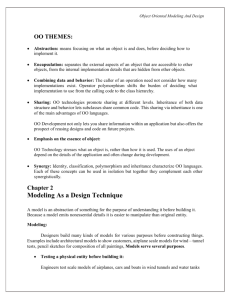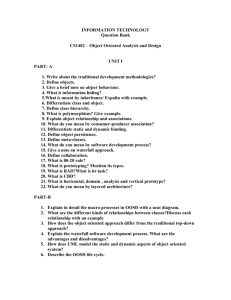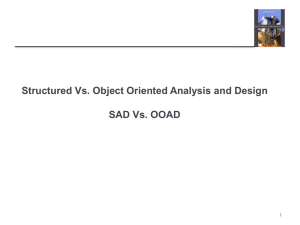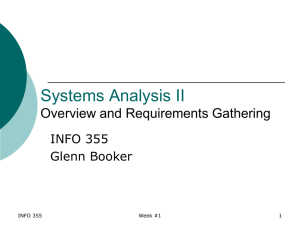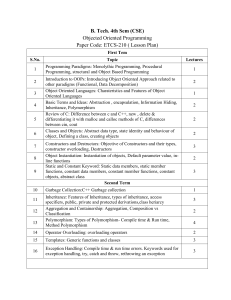Review on Object Oriented UML Modelling for intelligent transport
advertisement
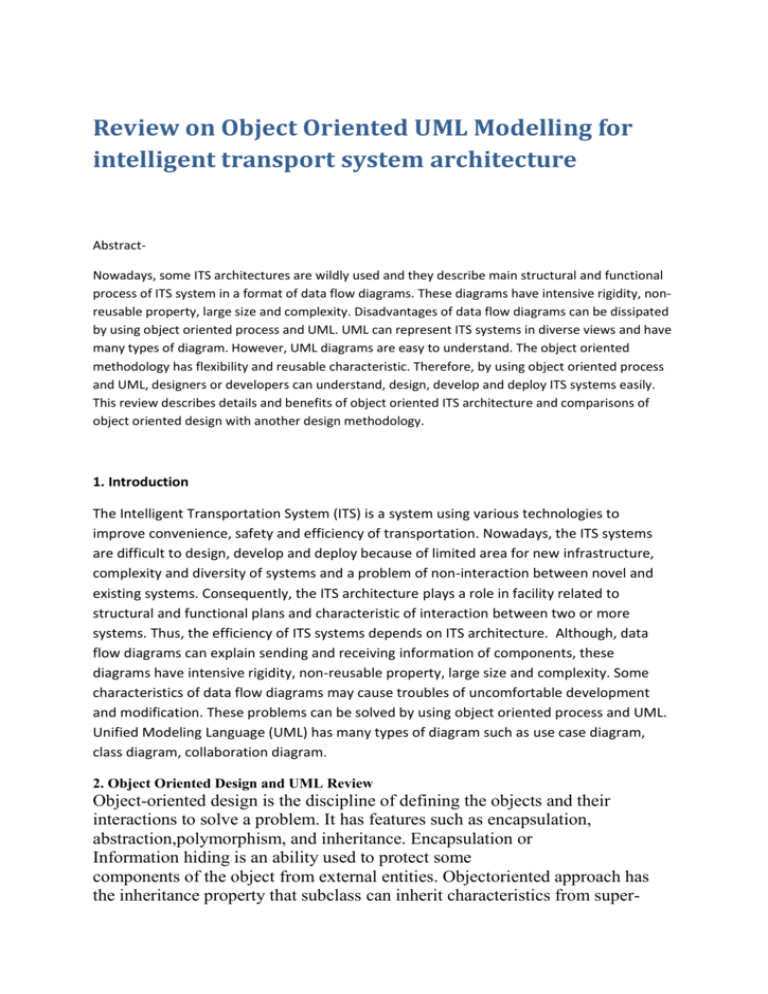
Review on Object Oriented UML Modelling for intelligent transport system architecture AbstractNowadays, some ITS architectures are wildly used and they describe main structural and functional process of ITS system in a format of data flow diagrams. These diagrams have intensive rigidity, nonreusable property, large size and complexity. Disadvantages of data flow diagrams can be dissipated by using object oriented process and UML. UML can represent ITS systems in diverse views and have many types of diagram. However, UML diagrams are easy to understand. The object oriented methodology has flexibility and reusable characteristic. Therefore, by using object oriented process and UML, designers or developers can understand, design, develop and deploy ITS systems easily. This review describes details and benefits of object oriented ITS architecture and comparisons of object oriented design with another design methodology. 1. Introduction The Intelligent Transportation System (ITS) is a system using various technologies to improve convenience, safety and efficiency of transportation. Nowadays, the ITS systems are difficult to design, develop and deploy because of limited area for new infrastructure, complexity and diversity of systems and a problem of non-interaction between novel and existing systems. Consequently, the ITS architecture plays a role in facility related to structural and functional plans and characteristic of interaction between two or more systems. Thus, the efficiency of ITS systems depends on ITS architecture. Although, data flow diagrams can explain sending and receiving information of components, these diagrams have intensive rigidity, non-reusable property, large size and complexity. Some characteristics of data flow diagrams may cause troubles of uncomfortable development and modification. These problems can be solved by using object oriented process and UML. Unified Modeling Language (UML) has many types of diagram such as use case diagram, class diagram, collaboration diagram. 2. Object Oriented Design and UML Review Object-oriented design is the discipline of defining the objects and their interactions to solve a problem. It has features such as encapsulation, abstraction,polymorphism, and inheritance. Encapsulation or Information hiding is an ability used to protect some components of the object from external entities. Objectoriented approach has the inheritance property that subclass can inherit characteristics from super- class.Polymorphism means that you can have multiple classes that can be used interchangeably. Thus, object oriented methodology has flexibility and reusable property. Moreover, object oriented design is absolutely represented by UML. UML is an important tool for system development process. We can use UML to generate models and diagrams and to communicate with participants. 3. Object Oriented ITS Architecture Design and development process of this architecture began with studying and analyzing well-known existent ITS architectures. We can understand many good prominent points of these architectures and use them to develop an object oriented ITS architecture. Meanwhile, we can find some their disadvantages which can be reduced by using object oriented process and UML. . 5. Assessment: The structure and design of object oriented ITS architecture have main benefits related to solving some existing ITS architecture problems as follows: 1. Flexibility – Object oriented approach has the inheritance property that sub-class can inherit characteristics from super-class. Therefore, we can use polymorphism, inheritance in the form of generalization/specification relationship to support new elements or modifications in the future. 2. Views – This architecture represents systems in various views. They help reduce complexity and size of diagrams. Therefore, designer or developer can understand them and use this architecture and to communicate with participants easily. For example, we can use deployment diagram (in deployment view) to discuss with project executive and to talk to system user with use case diagram. Moreover, component diagram is used for programmer. 3. Reuse – We can use some characteristics of existing super-class to create sub-class without redefine by inheritance. 4. Information hiding – We can use this feature to understand information access of each component by using keyword public or private. 5. Tools – This architecture can be described by various tools such as Bouml , Rational Rose, etc. 5. Comprehensive description- Another methodology such as National ITS Architecture can be describe by Turbo architecture tool. This tool has 3 main diagrams that are Subsystem, Interconnect and Flow diagram. Subsystem diagram cannot support new main structure in the future. Because, it cannot be add new component. However, class diagram can do by inheritance and polymorphism. Interconnect diagram has not various types of connection but class diagram has. Although Flow diagram can describe flow of data, it cannot represent working process. However, collaboration and sequence diagram are able to show functional sequence. National ITS architecture cannot describe system at the level of software component. Nevertheless, Component and deployment diagram can show software components of each part. 6. Conclusion: This review describes approach for design and development of ITS architecture and ITS system by using object oriented process and UML. This process has benefits relevant to reducing some problems of data flow ITS architecture problems. Moreover, this object oriented ITS architecture can help designers or developers to see an overview of all systems, to understand various objectives and diverse composition of system and to know works which are done in implementation. Moreover, we can use this ITS architecture to create software which can generate concrete diagrams and can give information and advice about ITS systems. Finally, we anticipate that this object oriented ITS architecture can participate in establishment of new real effective ITS systems or projects extremely .


